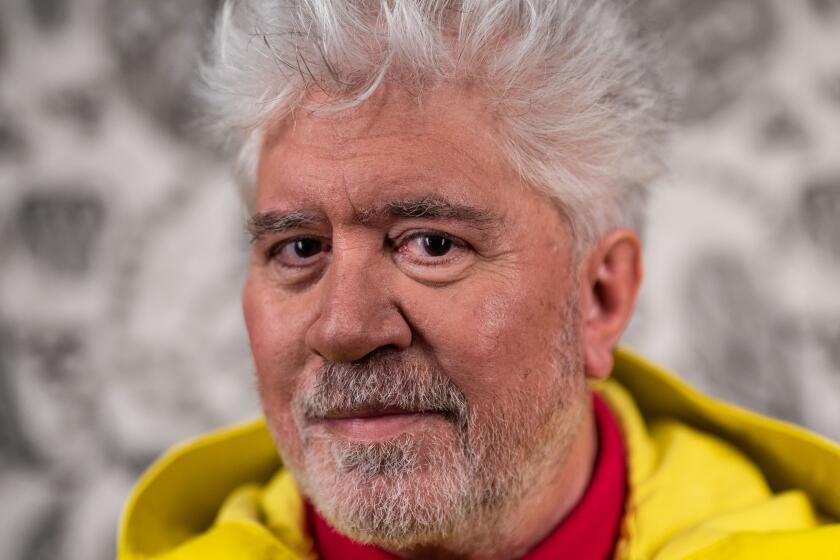From ‘Oedipus Rex’ to ‘Reservoir Dogs’
How Beautiful It Is and How Easily It Can Be Broken
Essays
Daniel Mendelsohn
Harper: 456 pp., $26.95
--
Here, among the flight of winged darts that pierce the critical essays of Daniel Mendelsohn:
Quentin Tarantino is “incapable of saying anything about real life because everything he knows comes from the movies.” There is a passivity despite the spectacular goriness, as if instead of confronting an audience with his work, he were a member of the audience watching it.
“People worry about Tarantino because they think he represents a generation raised on violence; but it’s as a representative of a generation raised on television reruns and video replays that he really scares you to death.”
Of novelist and critic Dale Peck’s savagely witty attacks on modernist writers and his demand that James Joyce and Vladimir Nabokov be largely stricken from the canon: “Canons aren’t drawn up like shopping lists; they grow organically, just as genres and styles do, out of the soil of the culture that produces them.”
Of a production of Euripides’ “Iphigenia at Aulis” that substitutes intimate realism for the terrible allegorical distances of Greek drama: “All you got . . . was living, feeling men and women, as if what happened at Aulis was Lyme disease or a bad dot-com investment, something awful that might well befall the nice people next door and that you vaguely hope won’t happen to you.”
These darts are only a piquant overture to Mendelsohn’s literary, theater and film essays, most published in the New York Review of Books. Thirty are collected here in “How Beautiful It Is and How Easily It Can Be Broken.” His wit is invariably harnessed to a graver wisdom; the verve and sparkle to an underlying conviction, often anguished. The epigrams have a purpose other than themselves.
He sneaks back and forth over the admittedly notional boundary between reviewing (which he does with elan and something of the contrarian provocation and pleasure of a Pauline Kael) and criticism. His scholarly specialty in classical Greek opens a larger perspective and forges some basic and burning convictions. He employs history, not so much of events as of how the arts have been conceived and used, as a means for judging what we do with them now.
Sharp as he can be in his judgments, he is equally sharp in identifying the virtues of what he doesn’t like. He gives a spacious view of the countryside, whatever the particular road he hews through it. He takes his subjects seriously, but not himself. Like Snow White, you might say, he whistles while he works.
His range is wide, frequently butting against received critical opinion (a Kaelish touch). He strips the flesh off Alice Sebold’s “The Lovely Bones”; far from staring horror in the face, the chirpy dead narrator is all consoling uplift. The book’s popularity, he suggests, reflects a will to escape the trauma of 9/11. We can die, but we remain positive.
Lucidly evoking Michael Cunningham’s “The Hours” and its model, “Mrs. Dalloway,” he argues that the filmed “Hours,” admirable as it is, weakens Clarissa, the main character, by admiring her not in her own right, as Woolf and Cunningham do, but through the eyes of the male figures.
He has stimulating things to say about Noel Coward, Oscar Wilde, Truman Capote, Pedro Almodovar and Ted Hughes’ adaptation of Euripides’ “Alcestis,” among many others. One of the strongest pieces disputes the universal judgment that “Brokeback Mountain” is about love in general, and not just gay love.
Mendelsohn, gay himself, argues that on the contrary, it is precisely a gay tragedy. To believe that the “normality” of the two main characters takes them beyond their gayness is to imply that gayness makes them something other than normal.
Through all the variety, one theme recurs: the tendency of our interpreters to soften history and the art of the past by bending it to contemporary concerns. He writes of Sofia Coppola’s “Marie Antoinette” that, while beautifully rendering the feelings of the protagonist, it ignores the Revolution and her place in it. At the end we get the pathetic havoc wreaked on her bedroom bibelots by the rampaging mob, but not the heads of her guardsmen impaled on pikes. The theme is rendered most powerfully in his various reviews of Greek tragedy. The brilliant Noh theater version of “Oedipus Rex” by Tadashi Suzuki -- it would be hard to find one more starkly beautiful, he writes -- misses the play’s wider public aspect. Sophocles presents the fall of a city, not just of a man, he argues: Here is an “Oedipus” without the “Rex.”
He excoriates a Deborah Warner staging of “Medea” that ignores the implacable, even “witchy” power of the protagonist in favor of a victimized resister, one “stranded somewhere between Sylvia Plath and Mia Farrow -- a frazzled woman who can’t figure how to act until the last minute.” This production aims at letting us identify with her, at bringing her close.
But Greek tragedy is not about identifying, he argues, but about a terrifying distance that enlarges us by setting us within a larger universe. Or, one might say, we don’t go to the circus to identify with the elephant but to be awed and transformed by its difference.
More to Read
Sign up for our Book Club newsletter
Get the latest news, events and more from the Los Angeles Times Book Club, and help us get L.A. reading and talking.
You may occasionally receive promotional content from the Los Angeles Times.








